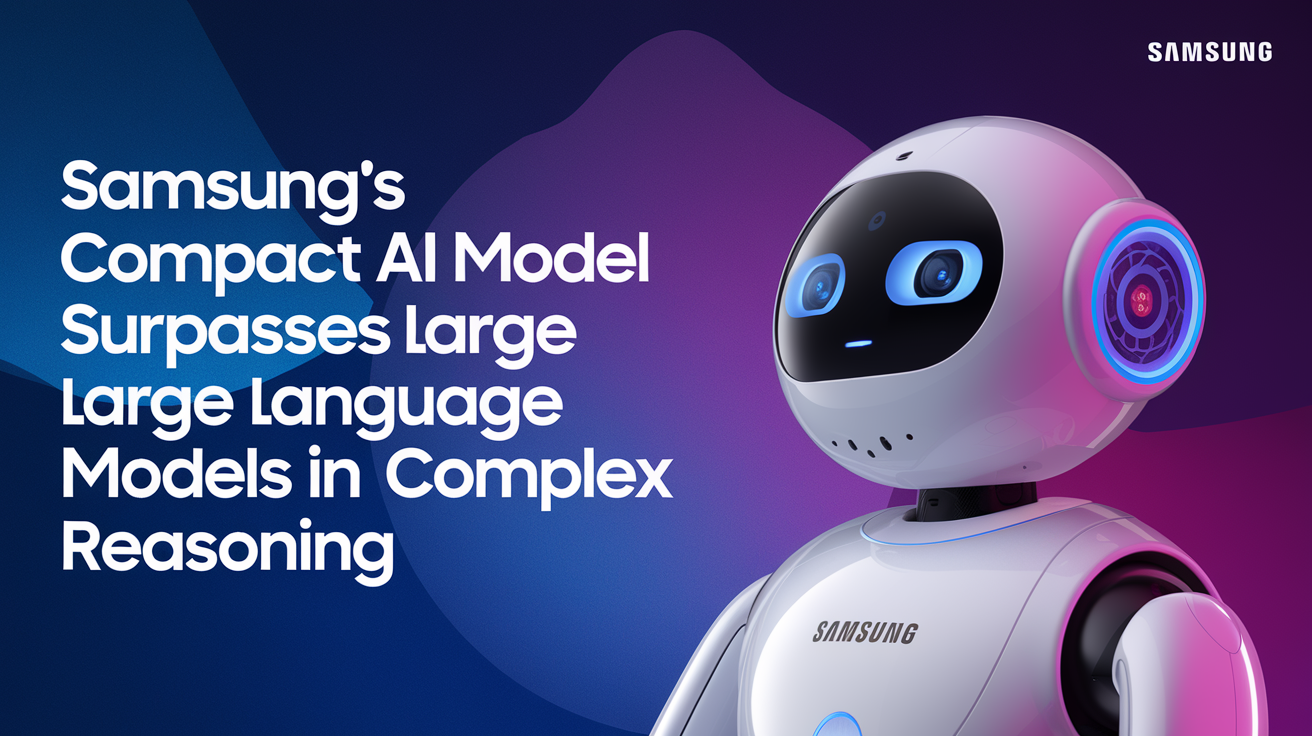A recent study conducted by a researcher from Samsung AI has revealed that a compact neural network can outperform large-scale Large Language Models (LLMs) in intricate reasoning tasks. Traditionally, the tech industry has operated under the principle that larger models yield better performance, prompting substantial investments from leading technology companies. However, Alexia Jolicoeur-Martineau from Samsung SAIL Montréal advocates for a more innovative and efficient approach through the development of the Tiny Recursive Model (TRM).
Efficiency of the Tiny Recursive Model
The TRM operates with a mere 7 million parameters, which is less than 0.01% of the size of the most advanced LLMs. Despite its small size, TRM has set new benchmarks in challenging assessments like the ARC-AGI intelligence test. This breakthrough challenges the notion that increasing model size is the sole pathway to enhancing AI capabilities, suggesting that a more sustainable and parameter-efficient method is attainable.
Challenges of Large Language Models
While LLMs excel at generating text that resembles human language, they often struggle with multi-step reasoning tasks. This limitation arises from their token-by-token answer generation approach, where an early error can completely compromise the final solution. Techniques such as Chain-of-Thought, which encourage models to articulate their reasoning, have been introduced to address this issue. However, these techniques can be resource-intensive, necessitating extensive high-quality reasoning data which may not always be accessible, and are still prone to logical flaws.
Advancements Over Previous Models
Samsung’s research builds on the principles of a previously developed model known as the Hierarchical Reasoning Model (HRM). HRM employed two small neural networks that worked recursively at varying frequencies to refine answers. While promising, HRM was complex and relied on uncertain biological concepts and intricate mathematical theorems.
Key Features of the TRM
In contrast to HRM’s dual networks, the TRM utilizes a single compact network that enhances both its internal reasoning and its output. The model is presented with a question, an initial answer guess, and a latent reasoning feature. It then undergoes multiple cycles to refine its reasoning based on these inputs, subsequently updating its answer prediction. This iterative process can be repeated up to 16 times, allowing the model to effectively correct its own errors with remarkable parameter efficiency.
Performance Improvements
Interestingly, the research found that a minimalistic two-layer network outperformed a more complex four-layer version. This reduction in complexity appears to mitigate overfitting, a typical challenge when training on smaller, specialized datasets. Furthermore, the TRM sidesteps the complicated mathematical justifications required by HRM, as it employs back-propagation through its complete recursion process, significantly enhancing performance.
Benchmark Achievements
The performance outcomes of TRM are impressive. On the Sudoku-Extreme dataset, which consists of only 1,000 training examples, TRM achieved a remarkable 87.4% accuracy, a substantial increase from HRM’s 55%. In the Maze-Hard task, which involves navigating through extensive 30×30 mazes, TRM scored 85.3%, surpassing HRM’s 74.5%.
Most notably, TRM has made significant advancements on the Abstraction and Reasoning Corpus (ARC-AGI), a benchmark designed to assess true fluid intelligence in AI. With only 7 million parameters, TRM attained 44.6% accuracy on ARC-AGI-1 and 7.8% on ARC-AGI-2, outstripping HRM, which utilized a 27 million parameter model, and even exceeding many of the largest LLMs in existence. For context, the Gemini 2.5 Pro model achieved just 4.9% on ARC-AGI-2.
Streamlined Training Process
The training for TRM has also seen enhancements in efficiency. An adaptive mechanism known as ACT was refined to determine when the model had sufficiently improved an answer and could transition to a new data sample. This simplification eliminated the need for an additional computationally expensive forward pass through the network at each training step without negatively impacting final generalization.
Samsung’s findings present a strong case against the current trend of developing ever-larger AI models. The research indicates that by designing architectures capable of iterative reasoning and self-correction, it is feasible to tackle highly complex problems using significantly fewer computational resources.
Future Prospects
As the AI landscape continues to evolve, the implications of this research could influence future developments in the field. The focus may shift towards creating more efficient models that prioritize reasoning capabilities over sheer size, ultimately leading to advancements in AI technology that are both sustainable and effective.
